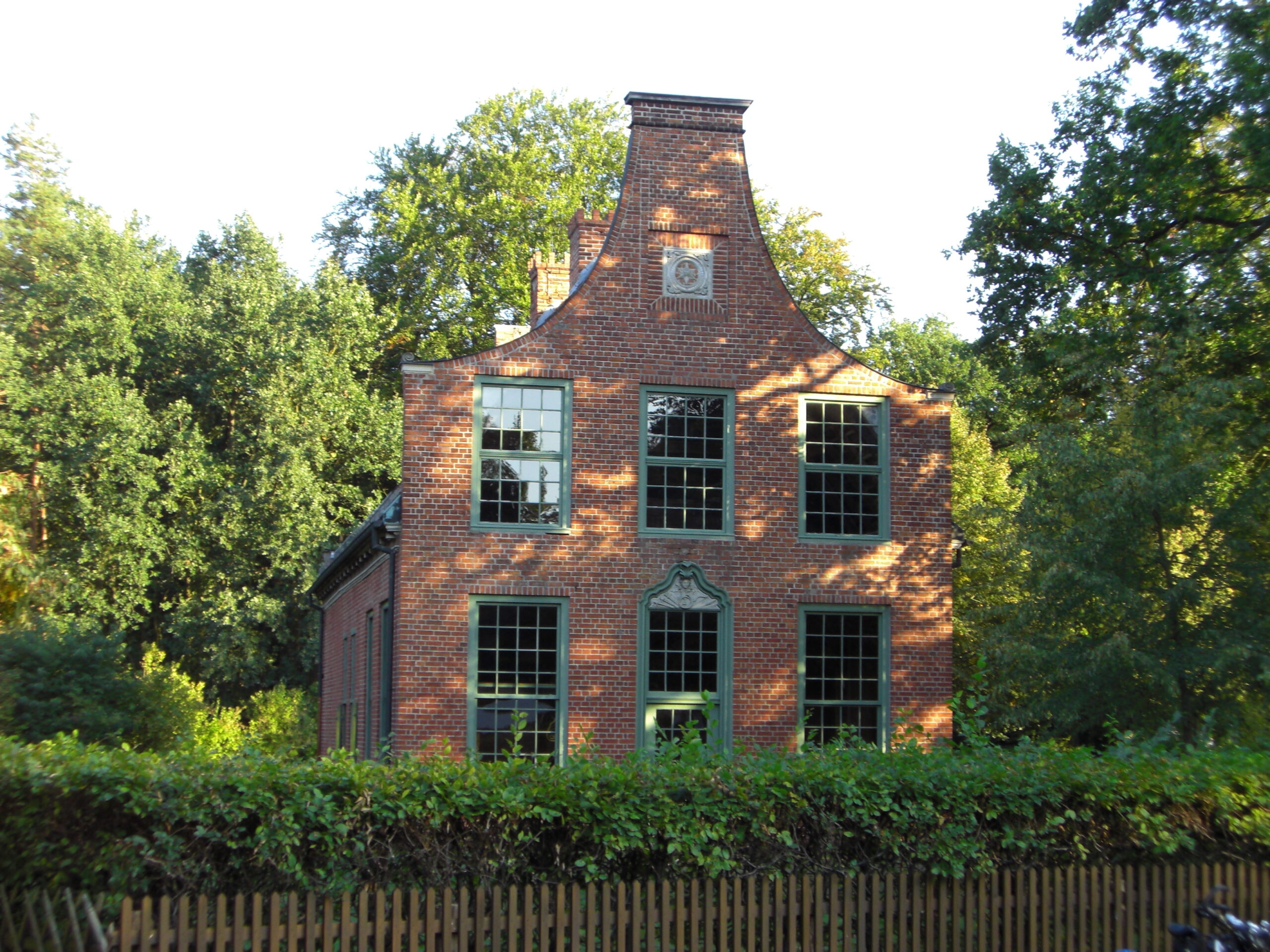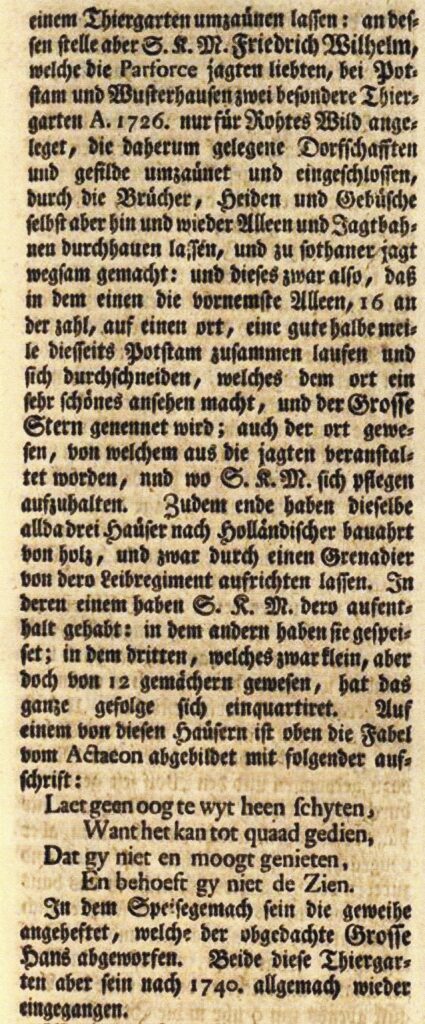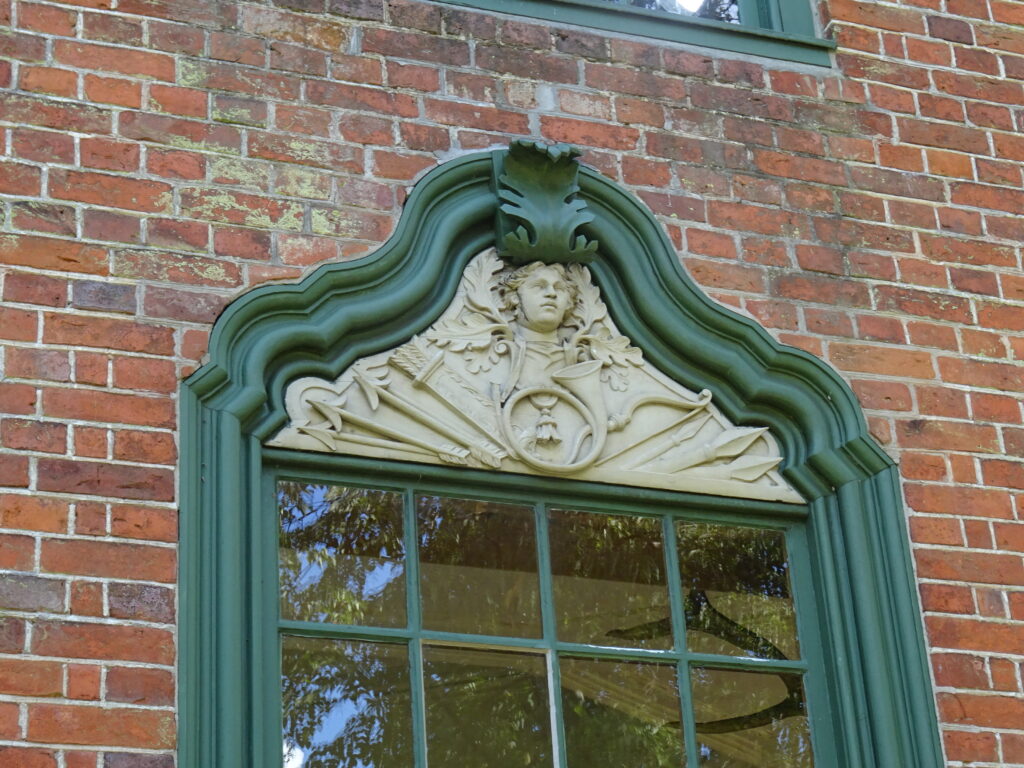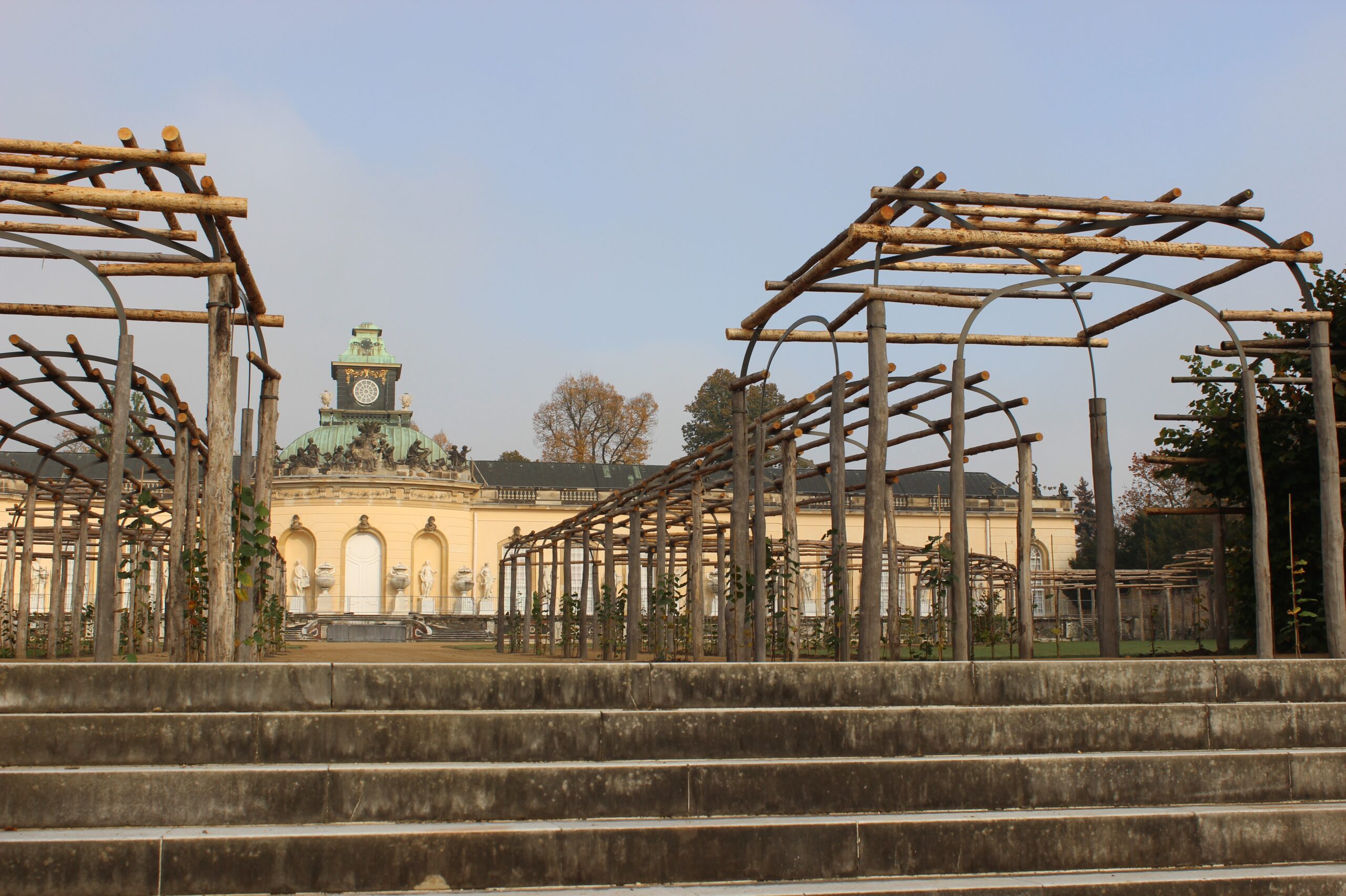
The Hunting Lodge
“Your Excellence already knows that a large house is to be built here at the Stern” is written in the postscript of a letter from the captain in the royal regiment and adjutant of the king, Hans Christoph Friedrich v. Hacke, to the head and court huntsman, Georg Christoph Graf v. Schlieben, dated 17 October 1730. This is the first mention of the building project on record.

In April 1731, the cabinet minutiae (copies of all decrees and letters of Frederick William I) record the order for building materials “for the two houses to be built in the local Parforce Garthen auf dem Stern and that Captain v. Hacke of the regiment and, in his absence, Lieutenant v. Hoffstedt are to supervise the construction of these two houses in the local Parforce Garthen auf dem Stern. Hacke of the regiment and, in his absence, Lieutenant v. Hoffstedt are to take care of the construction of the two houses in the local par force garden and keep the accounts for them”. Captain v. Hacke is hereby assigned the representation of the builder and responsibility for the payment of the craftsmen. Until the end of 1732, the files contain evidence of several payment orders to v. Hacke “for the Dutch House”, “for the well in the New House”, “for the other house”, “for the third house at the Stern” and “for the New Stable in the Parforce Garden”. Even though at first only two houses were mentioned, the building ensemble consisted of the castle built in the Dutch style, two pavilion buildings of the same type (of which only the castellan’s house remains today) and the horse stable, which was later converted into a residential building.

Particularly interesting is the following letter from Frederick William I to v. Hacke, abbreviated as usual in the cabinet minutiae in the form of address and greeting: “My dear etc., I am satisfied that the Dutchman has produced all kinds of work before 150 thlr, which you have the good grace to make known to him, I am etc. Wusterhausen, 23rd Oct. 1731”. This is clear evidence that at least one Dutch craftsman was involved in the construction of the hunting lodge. This possibly refers to the grenadier and master carpenter Cornelius van den Bosch, who came to Potsdam from Holland in 1722. He is also mentioned in the records in connection with the receipt of timber deliveries and was also active in other major building projects in Potsdam, including the construction of the Garrison Church. This also matched the tradition in Bekmann’s Historische Beschreibung der Chur und Mark Brandenburg (1751), according to which the king had his hunting lodge at the Stern of Dutch design erected by a grenadier from his personal regiment. As far as can be seen, this is the first description of this place, which mentions the Thiergarten laid out by King Frederick William I in Potsdam and also the ensemble of buildings at the original 16-rayed Potsdam Hunting Star, “which gives the place a very beautiful appearance and is called the Great Star”.
The author presents all three houses and their respective uses and thus also proves the existence of the royal hunting pavilion, which had already been demolished in 1767 due to dilapidation, and which hereafter served as accommodation for the king, while the hall in the hunting lodge, decorated with the antlers of the Great Hans, was used for dining. The third building with 12 rooms, in which the entire entourage was accommodated, undoubtedly refers to the castellan’s house, while the former stables and the other outbuildings are not mentioned separately.
A remarkable detail in Bekmann’s description is the reference that on the top of one of these houses (probably at the hunting lodge) the fable of Actaeon is depicted with the following Dutch inscription:
Laet geen oog wyt heen schyten, Want het kan tot quaad gedien, Dat gy niet en moogt genieten, En behoeft gy niet de Zien.
Let not your gaze wander far,/ for it may lead to disaster, lest you enjoy, what you should not see.
Johann Christoph Bekmann, Historische Beschreibung der Chur und Mark Brandenburg (1751), vol. 1, p. 785
This inscription refers to the version of the legend of the young huntsman Actaeon, known from Ovid’s Metamorphoses, who surprises the goddess Diana while she is bathing, whereupon she transforms him into a stag and he is torn to pieces by his own dogs. A wooden plaque with a painting or carving of Actaeon’s transformation and with this motto was probably fixed above the entrance door of the hunting lodge at the time. Such panels were very common in the Netherlands in the 17th century. It can be assumed that Frederick William I had acquired such a panel in the Netherlands with a motif that suited both the stag hunt and the confidential character of the king’s social gatherings and had it mounted on his Dutch hunting lodge.

Contrary to previous interpretations, the relief with hunting motifs, which was demonstrably added above the door at the beginning of the 19th century, therefore probably does not show the head of the goddess Diana, but actually the head of the hunter Actaeon, who looks through the foliage before he is discovered by Diana and her companions and thus cruelly punished. Thus the original motif would have been taken up again here in an artistically modified form.
The history of the Stern Hunting Lodge still holds many secrets that need to be unravelled. A good opportunity to take a close look at the Dutch house at the Stern and, above all, to see it from the inside, is offered by the opening days listed in the annual programme of the Förderverein.
– Bernd Küster, Förderverein Jagdschloss Stern – Parforceheide e.V.



